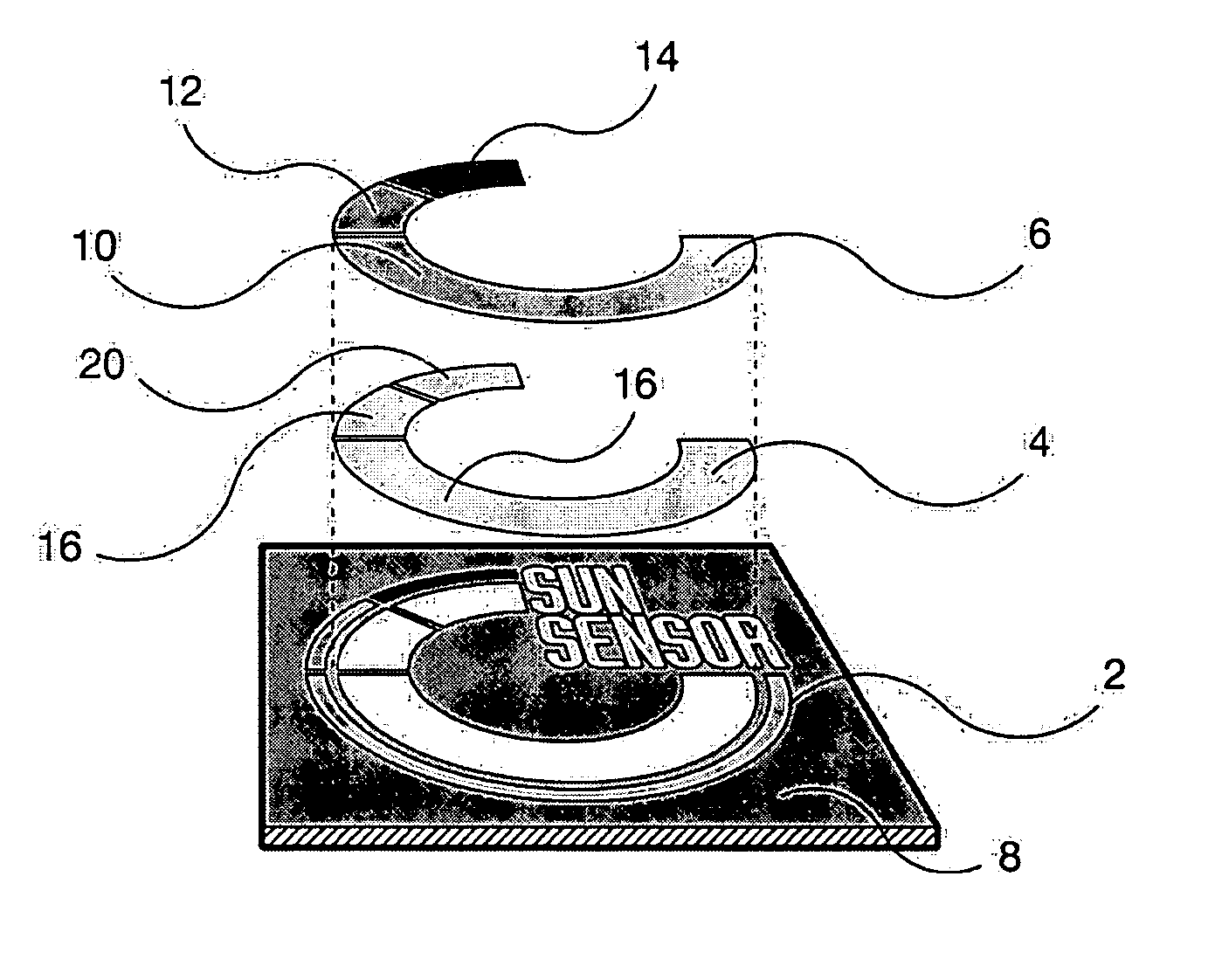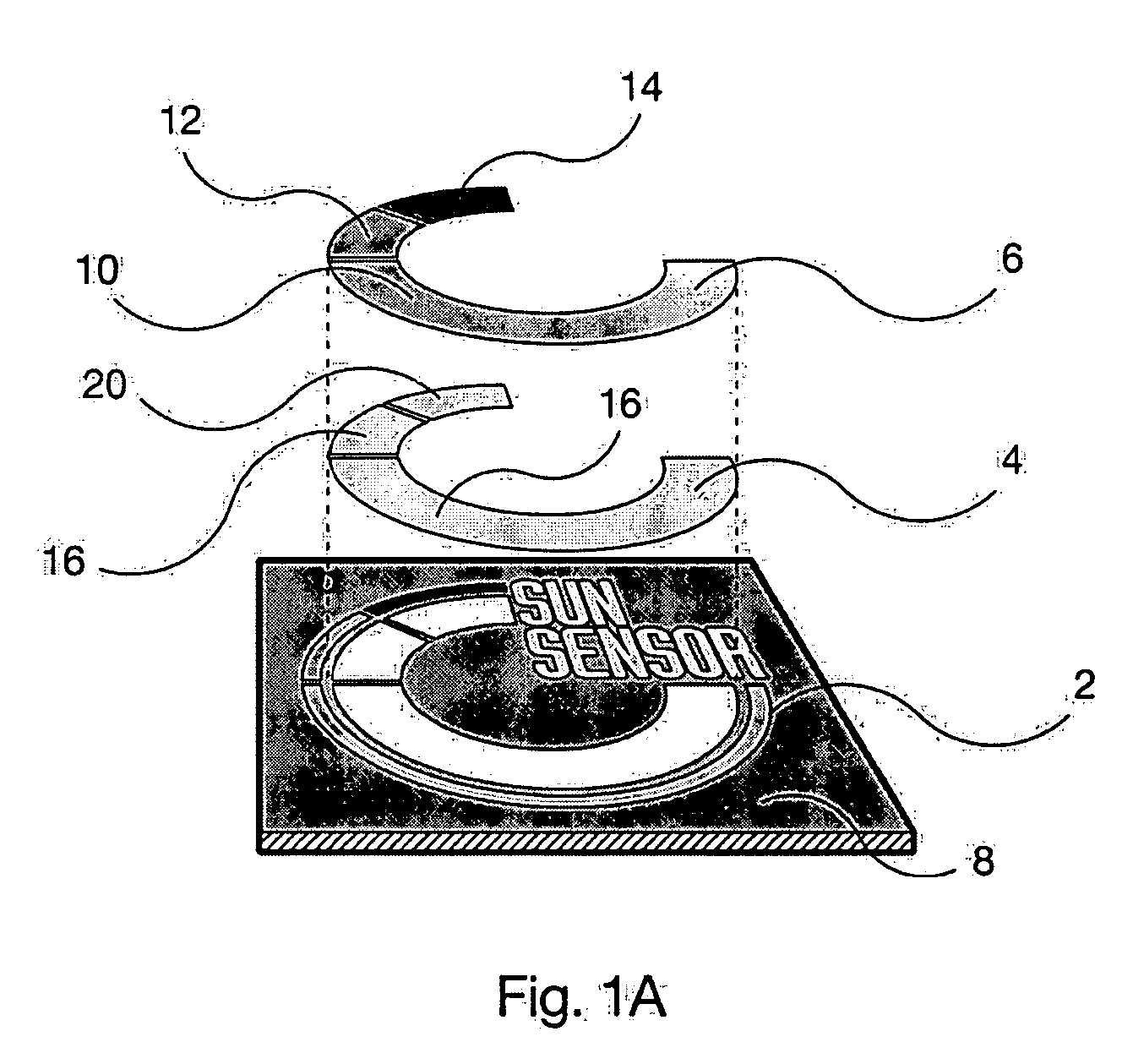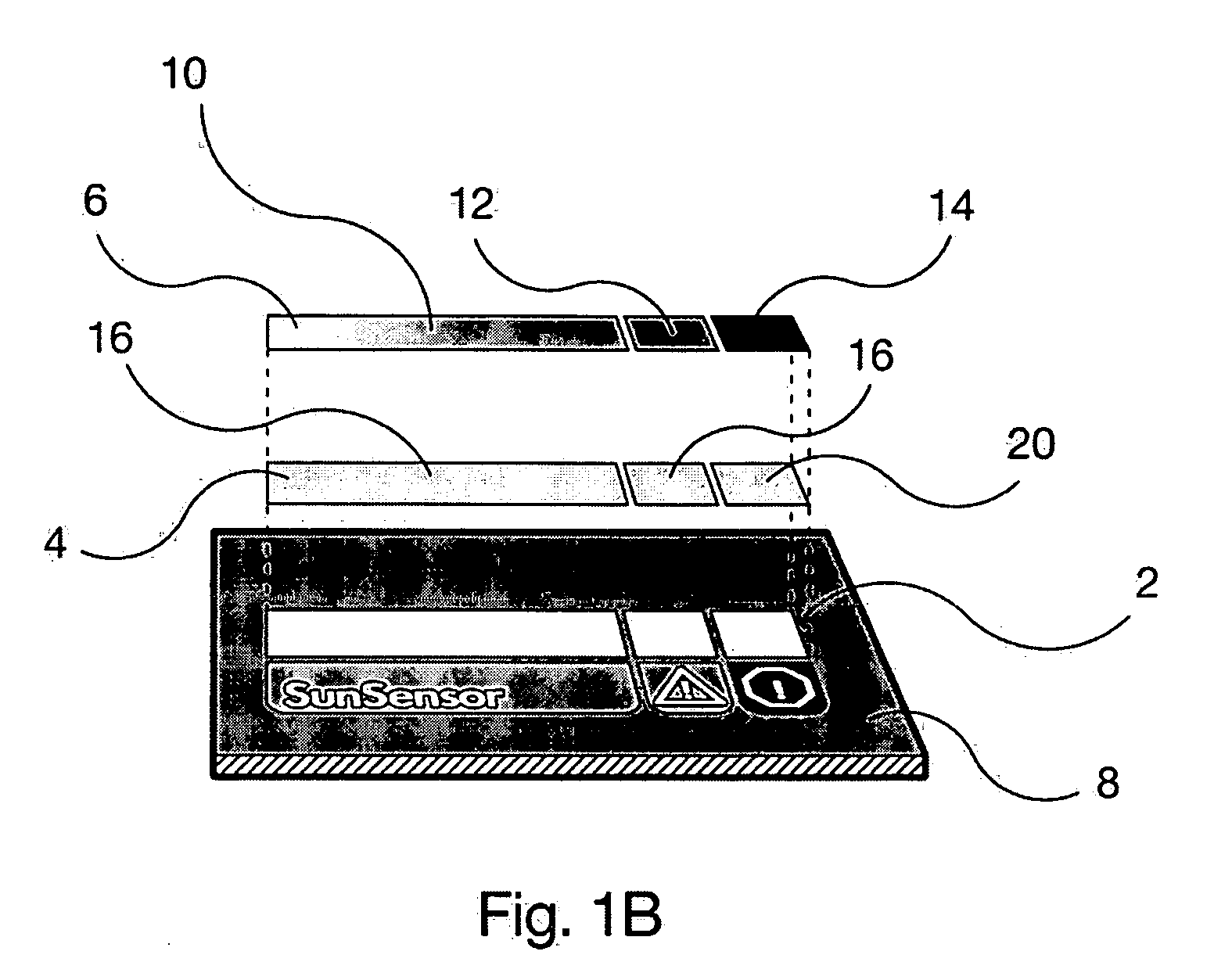Sun sensor, an article incorporating the sun sensor and methods of preparation and use
a technology of sun sensor and sun light, applied in the field of ultraviolet radiation sensors, can solve the problems of human skin wide range of deleterious effects, dehydration, burning, premature aging, discoloration, etc., and achieve the effect of reducing the risk of cancer
- Summary
- Abstract
- Description
- Claims
- Application Information
AI Technical Summary
Benefits of technology
Problems solved by technology
Method used
Image
Examples
first embodiment
[0025] In the first embodiment, the invention comprises a “printable” ultraviolet (UV) meter for a sun-care product, e.g., sun-tan lotion, packaging. It can be applied either during the normal label printing process with no equipment modifications, or applied afterwards as an adhesive patch. It functions by using a UV-responsive material, e.g., a photochromic dye that alters its color, preferably reversibly, upon exposure to UV light.
[0026] Photochromic dyes reversibly alter their color upon exposure to ultraviolet sources. These chameleon-like dyes respond to natural solar irradiation as well as artificial sources such as 365-nanometer “black light.” When sunlight or UV radiation is applied, the dye becomes excited and the molecular structure is changed allowing a color to appear. When the stimulus (sunlight / UV) is removed, the dye will return to a state of rest, which is its colorless form.
[0027] In typical applications, full color changes appear with exposure to UV light from mi...
second embodiment
[0054] With respect to the second embodiment the invention, as shown in FIGS. 4A and 4B, the layers of UV material preferably comprise PEN. PEN is a homopolymer resin which blocks UV radiation at wavelengths substantially higher than many other common thermoplastic polymers. PEN is visibly transparent yet provides a highly effective UV-protective barrier that prohibits transmission of UV light up to 383 nm. In a preferred embodiment of the invention, as shown in FIG. 4B, the thickness of the respective PEN layers may gradually increase from one portion of the layer to another.
[0055] Suitable substrates include any material to which the indicator layer will adhere. White or light-colored materials do not mask the color change of the photochromic ink, and are therefore preferred. Suitable materials for use as a substrate include, but are not limited to, white lithographic paper, white polyvinyl chloride (PVC) film, or other paper, film, or foil having a white, opaque coating. In a pre...
PUM
 Login to View More
Login to View More Abstract
Description
Claims
Application Information
 Login to View More
Login to View More - R&D
- Intellectual Property
- Life Sciences
- Materials
- Tech Scout
- Unparalleled Data Quality
- Higher Quality Content
- 60% Fewer Hallucinations
Browse by: Latest US Patents, China's latest patents, Technical Efficacy Thesaurus, Application Domain, Technology Topic, Popular Technical Reports.
© 2025 PatSnap. All rights reserved.Legal|Privacy policy|Modern Slavery Act Transparency Statement|Sitemap|About US| Contact US: help@patsnap.com



